May is Jewish American Heritage Month. In recognition, CHM curator of religion and community history Rebekah Coffman highlights materials from the Abakonowicz Research Center related to the National Council of Jewish Women.
The National Council of Jewish Women is the result of a gathering of Jewish women that took place during the 1893 World’s Columbian Exposition (WCE). In addition to the better-recognized national pavilions and Midway activities of that world’s fair, numerous ancillary activities were held, including the World’s Parliament of Religions. This gathering included representation from and congresses about religious representation, including denominationally specific committee gatherings. One such meeting, held by the Jewish Women’s Committee, became known as the Jewish Women’s Congress (JWC). The congress was held September 4–7, 1893, and saw participation by ninety-three delegates from twenty-nine cities. At its conclusion, the congress voted to establish the National Council of Jewish Women (NCJW), an organization still active today.
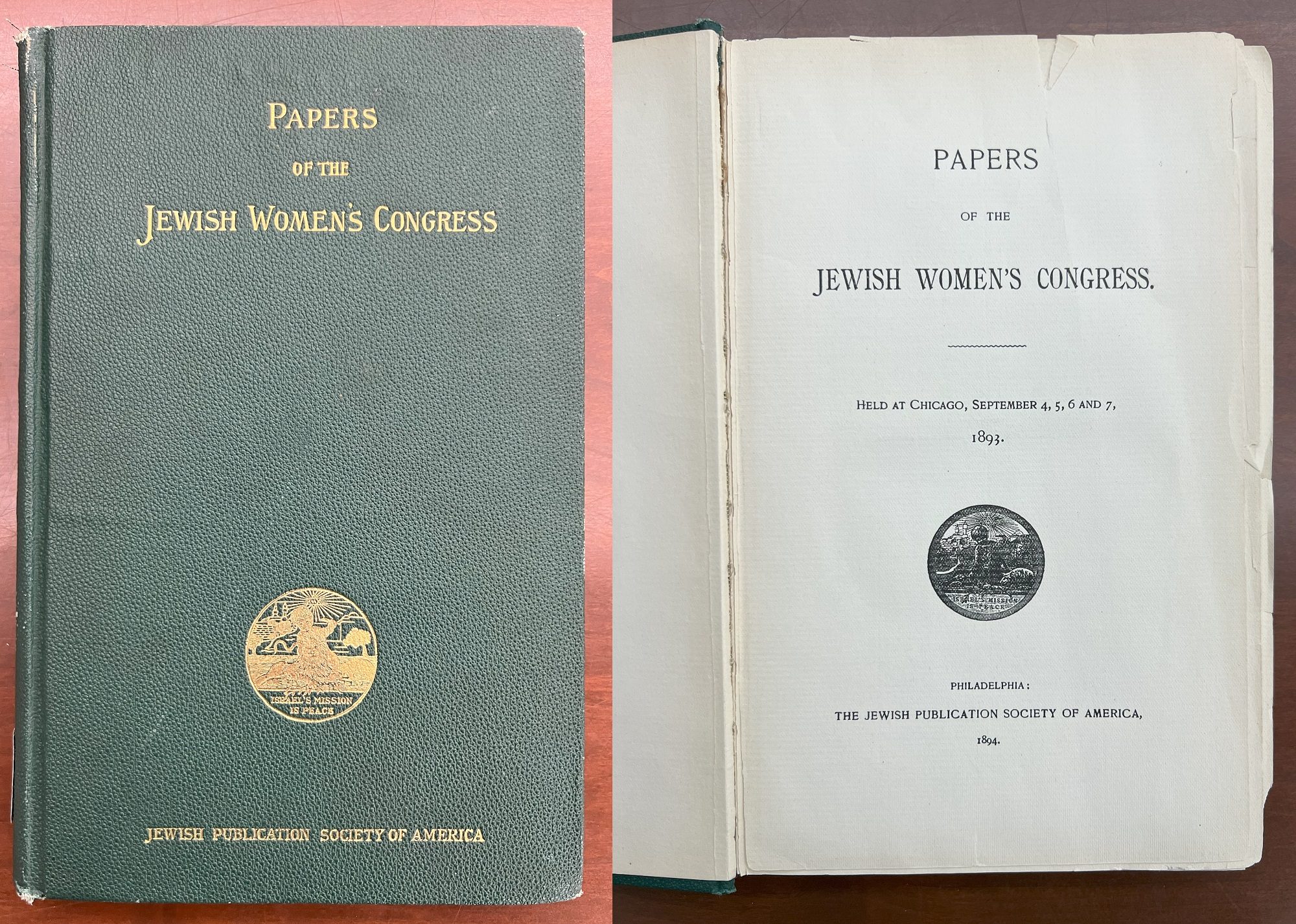
Papers of the Jewish Women’s Congress, 1894. E184.J5 J5 1893.
The NCJW was founded and chaired by Hannah Greenebaum Solomon (1858–1942), who was born to Sarah and Michael Greenebaum and raised in Chicago as one of ten children. She was active in both religious and social circles as a member of Temple Sinai synagogue and, along with her sister Henrietta, as the first Jewish members of the Chicago Women’s Club. As chair of the JWC, Solomon made the strategic move to shift the gathering of Jewish women from the WCE’s Women’s Building to the World’s Parliament of Religions, centering the philanthropic aims of the gathering and planning for its future initiatives.
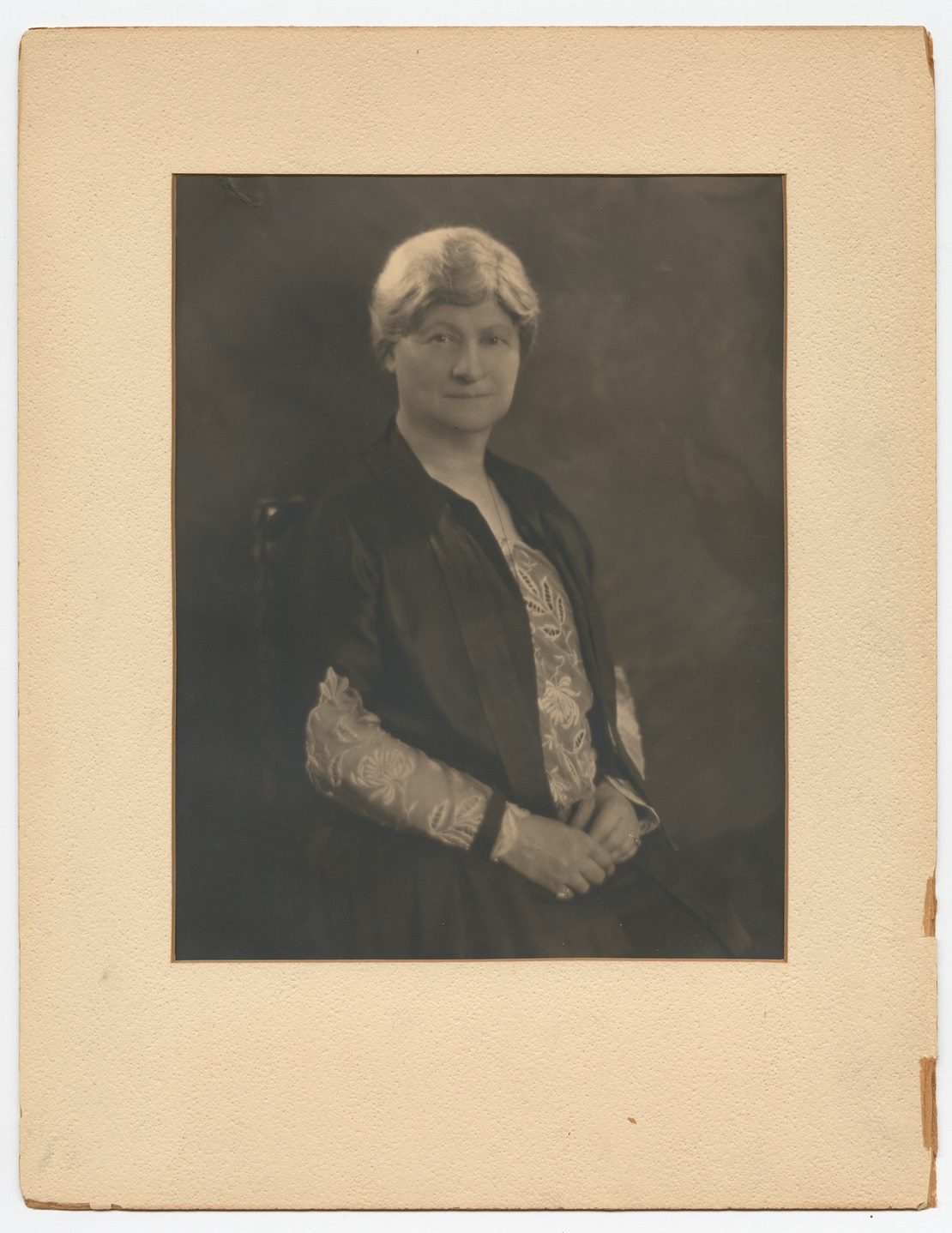
Portrait of Hannah Greenebaum Solomon, c. 1915. CHM, ICHi-088576
At its founding, the heart of the NCJW’s work was religious education for women and children. As the organization grew, it expanded its missional focus into broader philanthropic efforts, with a special emphasis of providing aid to immigrants. This included facilitating social services for young Jewish women through providing housing, vocational training, and other services to acculturate to American life.
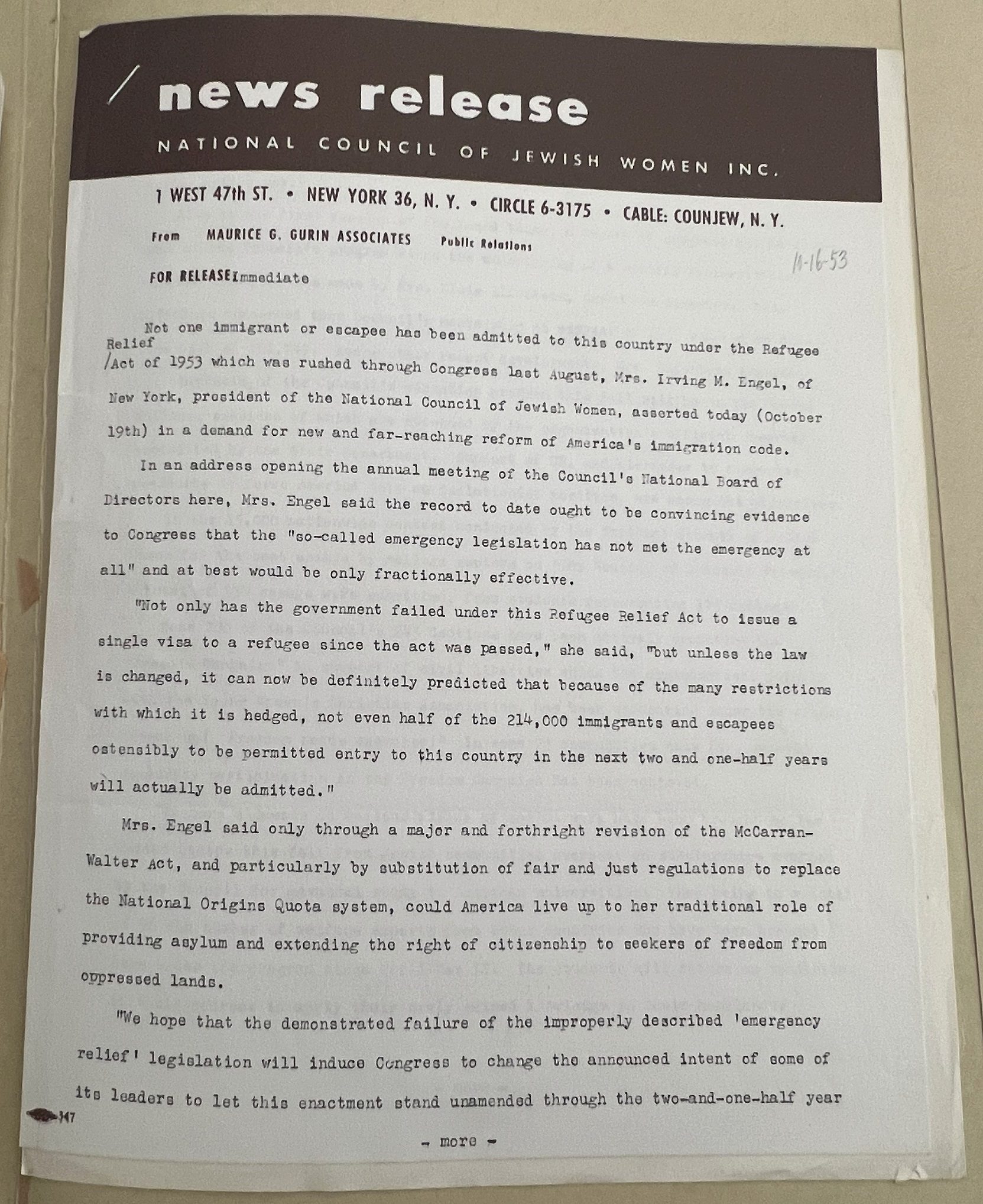
Press release discussing immigration reform, dated October 16, 1953. Box 7, folder 2, “Council of Jewish Women; Community Service and Activities; Misc. Immigration”
Through Solomon’s connections, the NCJW remained allied with other organizations providing aid services, including Jane Addams and Hull-House. The NCJW’s membership grew quickly following its inaugural meeting, growing from its original ninety-three members in 1893 to more than 50,000 members by 1925.
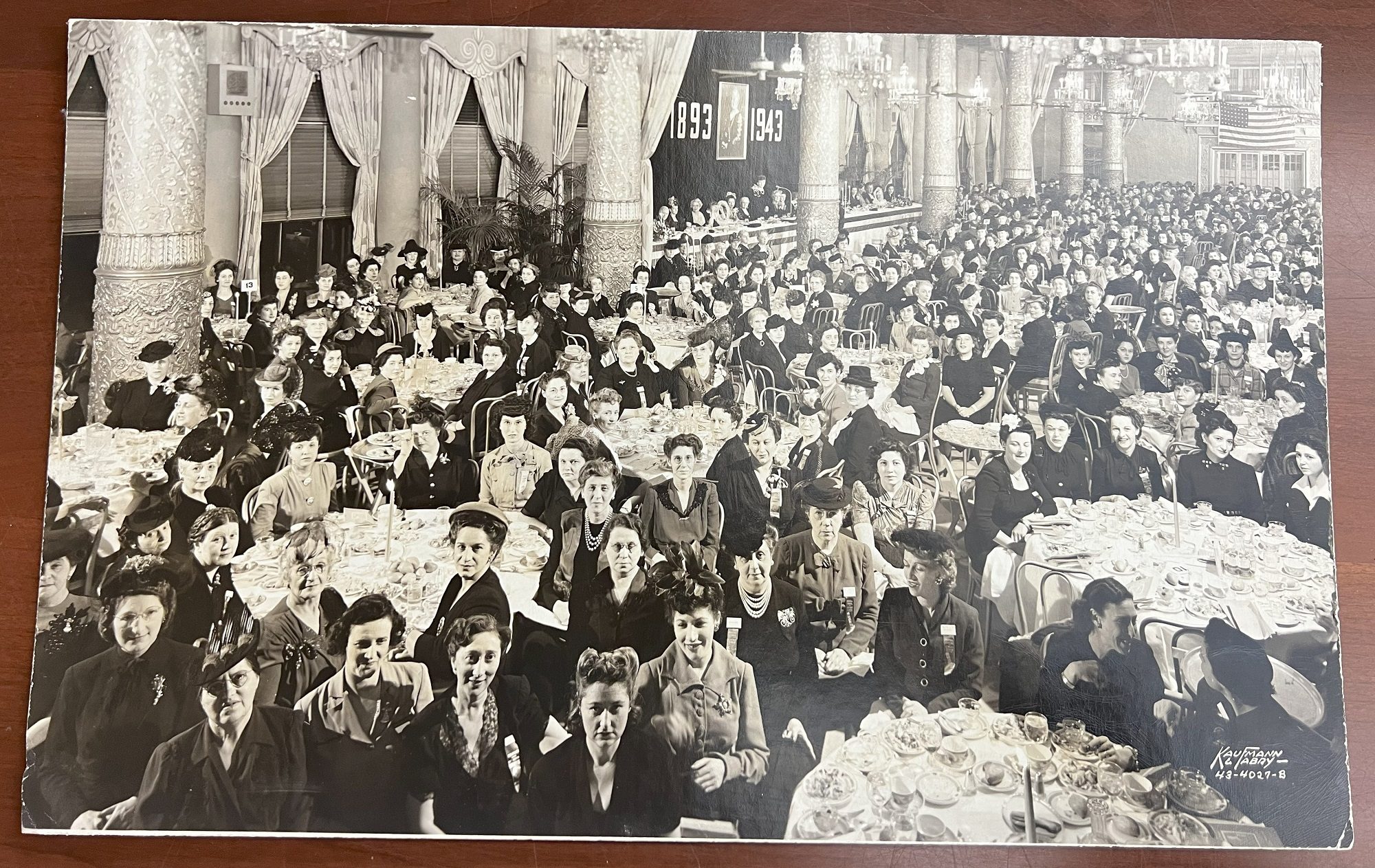
50th Anniversary Banquet of the National Council of Jewish Women, 1943.
In the early twentieth century, the NCJW expanded its advocacy and aid efforts as it fundraised for war relief during World War I, campaigned for passage of women’s suffrage in 1919, advocated for jobs during the Great Depression, and fought against racial discrimination. During World War II, it was active in a wide cross section of relief efforts, including working with displaced persons. The NCJW’s growth continued postwar and, by 1970, it boasted over 110,000 members. Its mission, too, continued to grow and shift as the organization saw the country’s philanthropic needs transform.
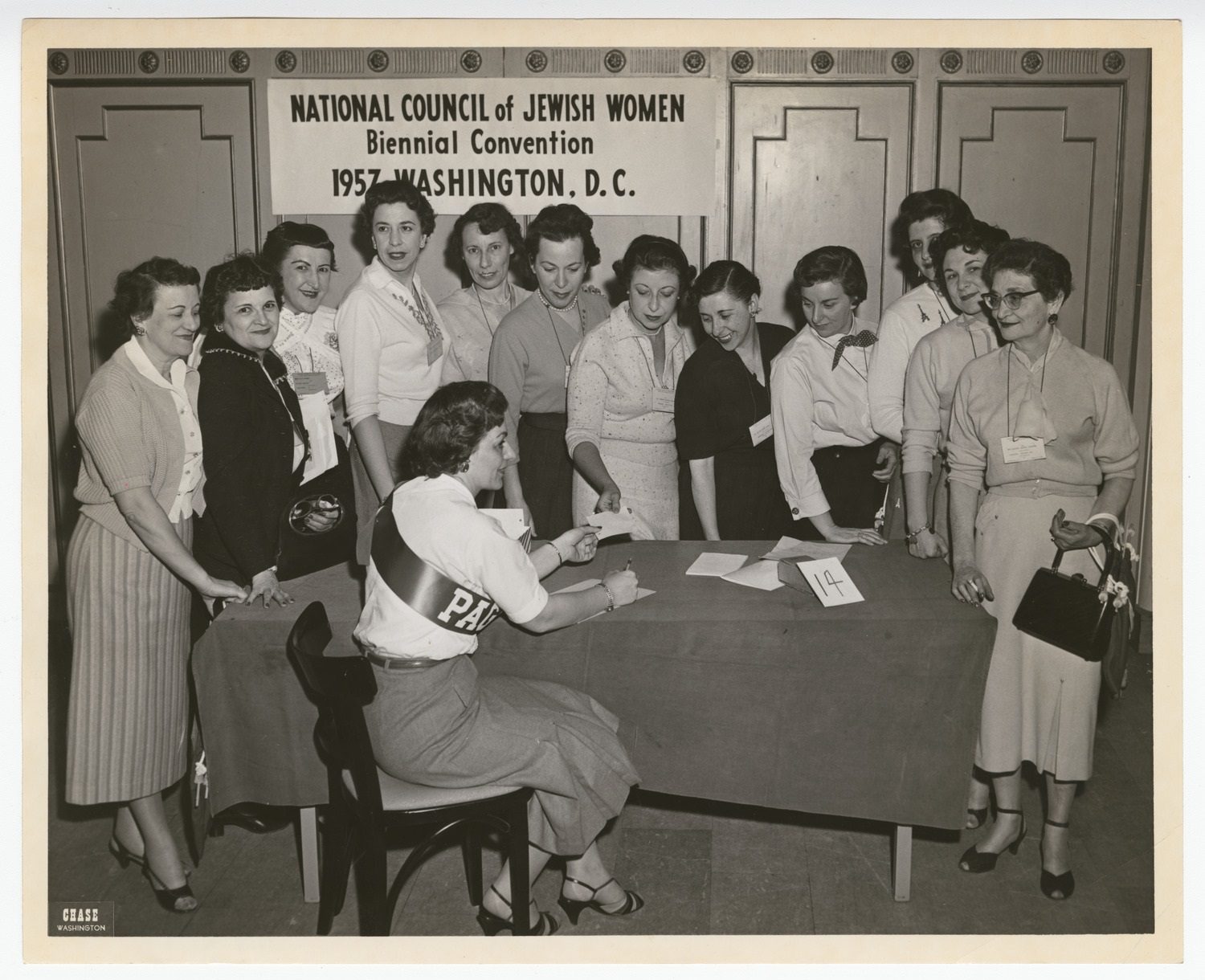
Women gathered around a table at the National Council of Jewish Women 1957 Biennial Convention in Washington, DC. CHM, ICHi-088573
Today, the legacy of the NCJW continues through its continued presence as a grassroots organization centered on advocacy and political activism with approximately 210,000 members who are active in all fifty states and internationally. Through a Jewish lens, the NCJW advocates for pluralistic human rights issues including reproductive rights, voters’ rights, and resources for refugees.
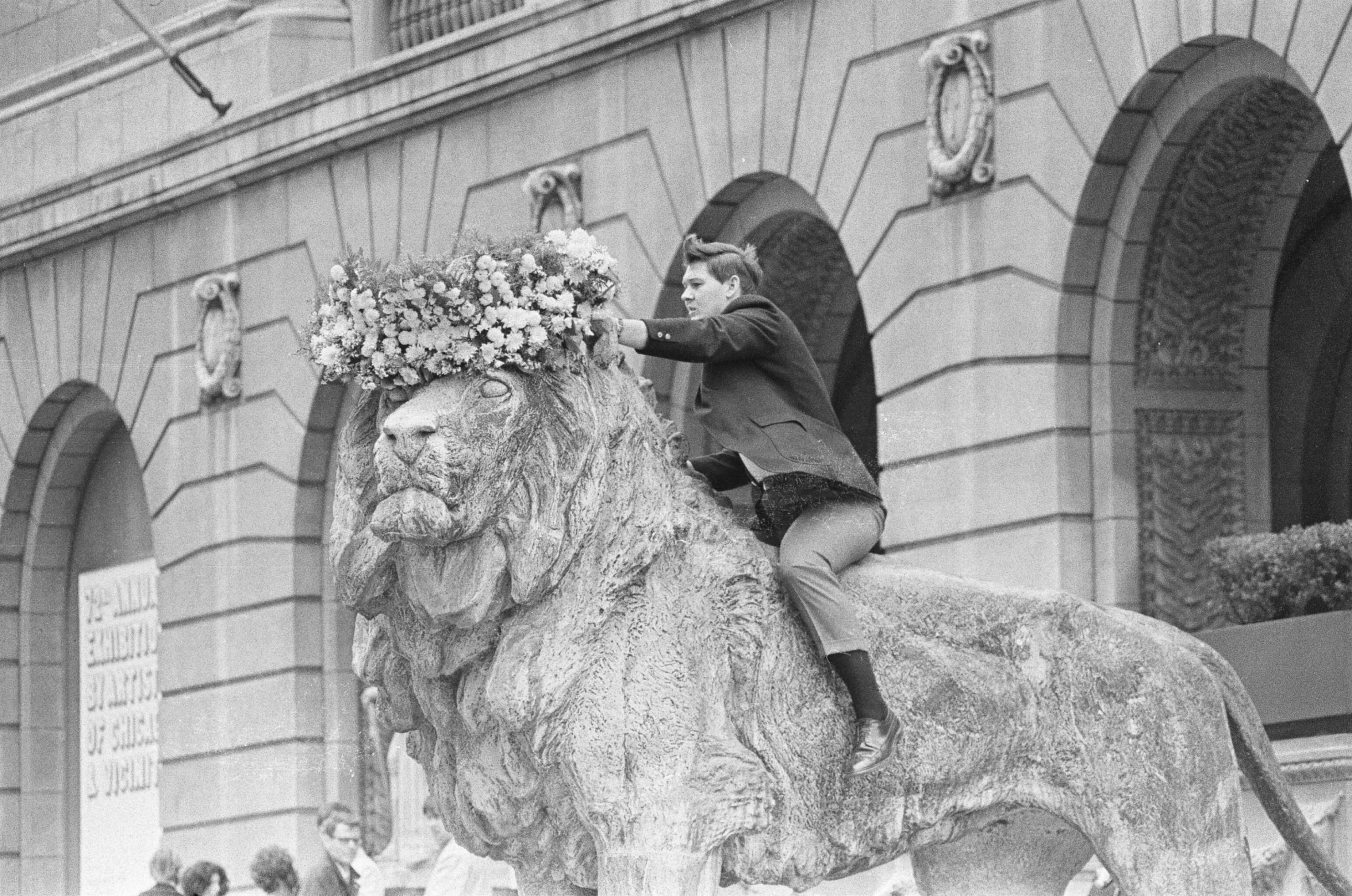
Lions in front of the Art Institute of Chicago crowned with flower wreaths in honor of the 75th anniversary of the National Council of Jewish Women, 1969. ST-30000413-0004 (top) and ST-30000412-0002 (bottom), Chicago Sun-Times collection, CHM
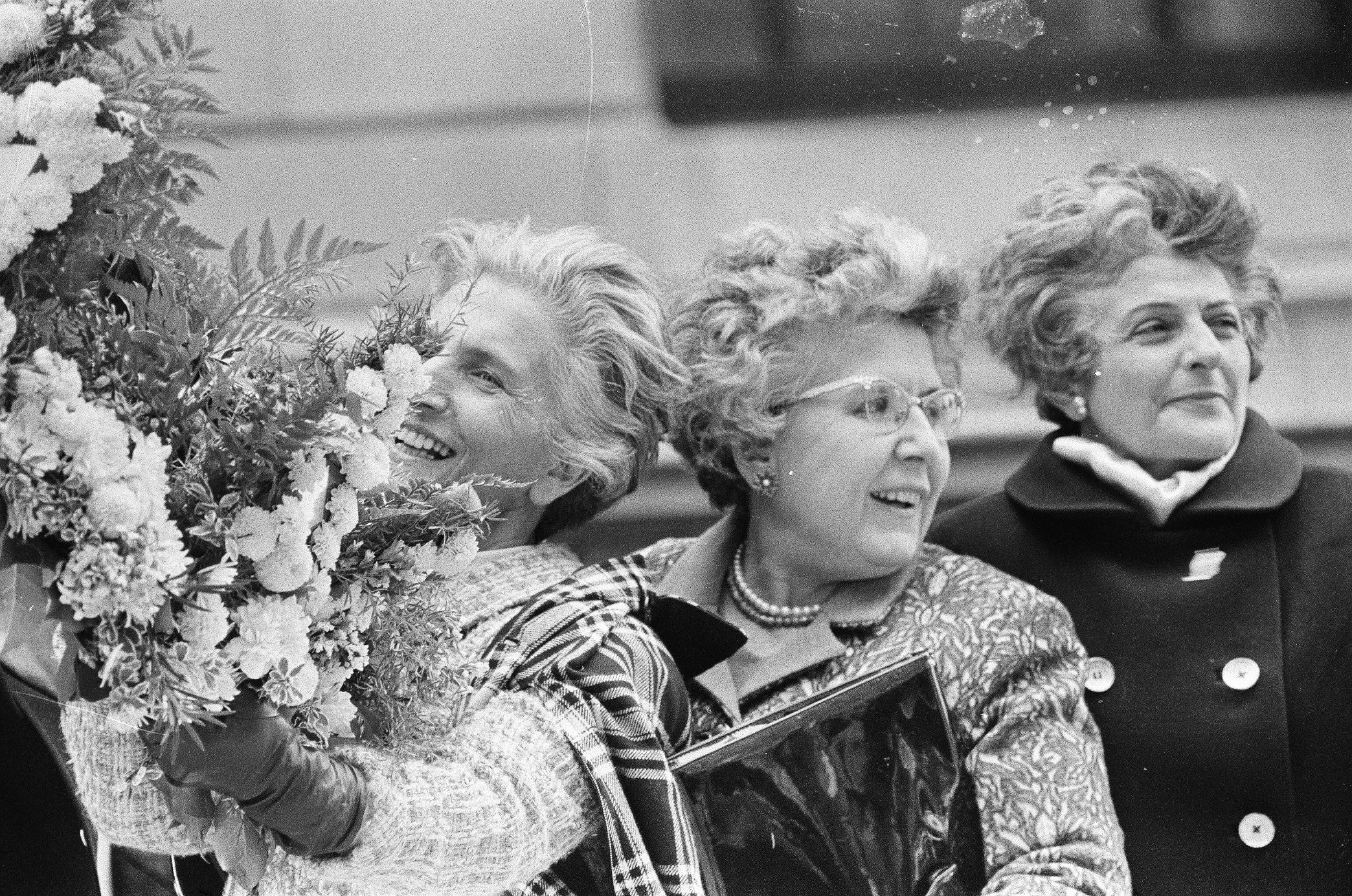
Art Institute lions wreath ceremony by group from the National Council of Jewish Women, 111 South Michigan Avenue, Chicago, Illinois.
These efforts expand the original mission of the NCJW and speak to the legacy Hannah Solomon identified in 1893: “The influence of the Congress is . . . not to be measured by the size of its audiences, nor by the merits of its papers. Its chief result is that it brought together, from all parts of the country, East, West, and South, women interested in their religion . . . Its outcome is a National Organization, and its use was to prove to the world that Israel’s women, like women of other faiths, are interested in all that tends to bring men nearer together in every movement affecting the welfare of mankind.”
Additional Resources
- View the papers of the Jewish Women’s Congress at the Abakanowicz Research Center, which is free to visit
- See more images related to the National Council of Jewish Women
Join the Discussion